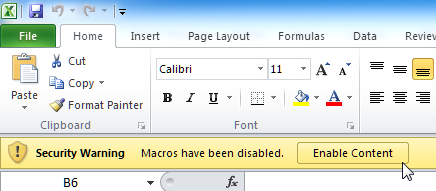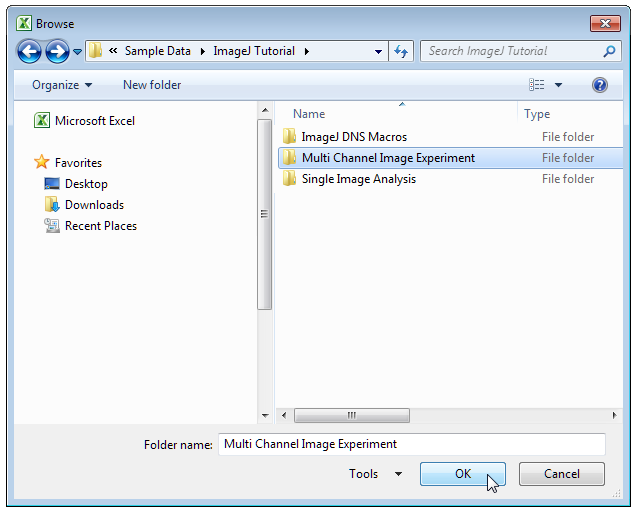使用DNS-IJXwriter Excel宏,来创建一分析配置文件
在这一节中,我们将学习如何使用DNS-IJXwriter Excel宏,来自动生成一.ijx分析配置文件。此DNS-IJXwriter Excel宏是包含一个宏的Excel文件,由Peter Haub编写,它会自动从图像的文件夹中读取文件名,然后生产一.ijx文件。
| 1. | 请打开位于教程样本数据库中ImageJ教程→ImageJ DNS Macros文件夹。 |
| 2. | 点击Enable Content(启用内容)按钮(图T28.102)。 |

Figure T28.102 Enabling macros in a Microsoft Excel file.
| 3. | 点击Read File Names(读取文件名)命令(图T28.103)。 |

Figure T28.103 Clicking on the Read File Names macro button
| 4. | 请导航到 Tutorial Sample Data Archive(样本教程数据库) 中→ImageJ教程文件夹下的"Mutli Channel Image Experiment(多通道图像实验)"文件夹。 |
| 5. | 点击OK(图T28.104)。 |

Figure T28.104 Navigating to the ImageJ Tutorial folder within the Tutorial Sample Data Archive
| 6. | 在电子表格的“Channel”列(D列),为每个图片输入相应的通道名称(即"DAPI"或者"FITC")。 现在,您的电子表格看上去应如图T28.105。 |

Figure T28.105 DNS-IJXwriter.xlsm Excel file after file names have been read and channel names entered into the appropriate column.
| 7. | 点击Write IJX File(写入IJX文件)命令(图T28.105,红框显示)。 |
"DeNovo.IJX"这个分析配置文件,就被写入到TutorialSampleData/ImageJ Tutorial/Multi Channel Image Experiment(多通道图像实验)目录文件夹。此.ijx文件,现在可能使用DNS MacroExample.ijm宏,在ImageJ中进行了加工处理,为了使该文件变为FCS Express可读的.ijout文件。
